King of Alcatraz
Brief Synopsis
Cast & Crew
Robert Florey
Gail Patrick
Lloyd Nolan
J. Carroll Naish
Harry Carey
Robert Preston
Film Details
Technical Specs

Synopsis
Near the San Francisco docks of the Pacific Navigation Co., two radio operators, Raymond Grayson and Robert MacArthur, are called before company president Matthew Talbot, who orders them to stop their destructive rivalry, then gives them new sailing orders. At a bar, the two men get drunk and fight over a young woman named Dixie, but are thrown out. Broke, Ray and Bob share a cab, and each tries to con the other into believing he has received a promotion. Their ride is interrupted by a shootout resulting from gangster Steve Murkil's escape from Alcatraz. When Ray and Bob realize that they both have been assigned to the grimy freighter S.S. Escobar , they can only laugh heartily before they are introduced to Captain G. S. Glennon. Dale Borden checks aboard as ship's nurse, followed by passengers Bonnie Larkin and her grandmother, Mrs. Farnsworth. Bonnie is Murkil's girl friend, and "Mrs. Farnsworth" is actually Murkil in disguise. The other passengers all belong to his mob. Ray and Bob soon realize that they both are in love with Dale, although she and Ray had broken off an earlier relationship. That night, Murkil punishes Fred Kateny, a member of his gang who turned state's evidence, by pushing him overboard to drown. When the ship's officers receive orders to search the ship for Murkil, he pulls a gun and his men take over the ship. To force Glennon into allowing Ray and Bob to send a message confirming the ship's safety, Murkil kills one of the crew. While Bob distracts a guard, Ray writes a note to Dale instructing her to light the distress rockets in the captain's cabin. There Dale finds Murkil waiting, and Bonnie is suspicious at seeing the two together. Bob jumps Murkil's guard and sends Ray to get the captain, but Ray is caught in the resulting gunfire and dumped in the hold. There he pieces together a radio from car parts and using a spark, sends out an S.O.S. that is heard by a passing vessel. He is again apprehended, however, by Murkil's men, who severely wound him. To save his friend, Bob promises to send the necessary message to arrange Murkil's landing in Puerta Calle on condition that he be allowed to call a doctor on another ship. Describing Ray's condition, the doctor says that an immediate operation is necessary, and he sends word by radio instructing Dale and Bonnie how to proceed. Meanwhile, in the engine room, the crew overpowers Murkil's henchman and regains the ship. Glennon shoots Murkil and commends Bob, Ray and Dale for their bravery. Finally, at a cafe, Ray and Dale celebrate their wedding and invite Bob to join them on their chicken farm in Petaluma, and pledge never to go to sea without Bob.

Director

Robert Florey
Cast

Gail Patrick
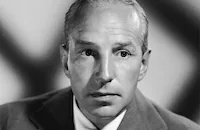
Lloyd Nolan

J. Carroll Naish
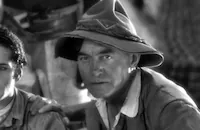
Harry Carey

Robert Preston

Anthony Quinn

Richard Stanley
Virginia Dabney
Nora Cecil
Emory Parnell
Dorothy Howe
John Hart
Phillip Warren
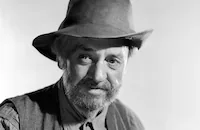
Porter Hall
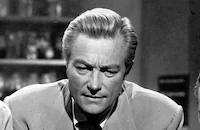
Richard Denning
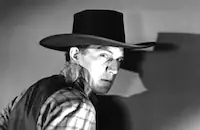
Tom Tyler
Konstantin Shayne
Harry Worth
Edward Marr

Clay Clement
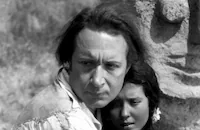
Monte Blue
Gustav Von Seyffertitz

Paul Fix
John Harmon
Jack Knoche
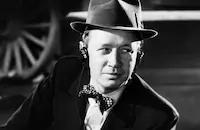
Eddie Acuff

Pierre Watkin
John M. Sullivan
Dick Rich
Galan Galt
Dick Rush
Buddy Roosevelt
Charles Mcavoy
Walter Tetley
Ruth Rogers
Jack Norton
Stanley Blystone
George Anderson
Hooper Atchley
Vic Demorouelle
Crew
Hans Dreier
Mel Epstein
Harry Fischbeck
A. E. Freudeman
Earl Hedrick
William Le Baron
Gene Merritt
Boris Morros
Richard Olson
Irving Reis
C. Gardner Sullivan
William C. Thomas
Eda Warren
Adolph Zukor

Film Details
Technical Specs

Quotes
Trivia
Notes
King of Alcatraz marked the film debut of Robert Preston. According to a May 9, 1938 letter in the file on the film in the MPAA/PCA Collection at the AMPAS Library, James V. Bennett of the Bureau of Prisons at the Department of Justice in Washington, D.C., wrote to Joseph I. Breen, head of the PCA, and stated that according to newspaper gossip columnist Sheila Graham, King of Alcatraz was to be based on the recent mental illness of Al Capone. According to Graham's newspaper article, the film's story would open in Alcatraz and would show the effect of prison life on the mind of the prisoner. The article states, "Ever since Al Capone made headlines with his recent mental illness in Alcatraz Prison, all of Hollywood's major and minor studios have been brooding on how to turn it to capital and a picture." Bennett further states, "I hope that Miss Graham is not in full possession of the facts when she indicates that Paramount will produce a picture tending to show that prison life made Al Capone insane." (Capone's insanity was actually caused by syphilis.) Paramount executive Luigi Luraschi wrote to Breen on May 13, 1938 stating that, according to production supervisor Harold Hurley, Graham's information was erroneous: "Our story deals with a prisoner in Alcatraz who feigns illness in order to be removed to a hospital in San Francisco, from which he plots an escape. There will be no indication in the story that prison conditions drive prisoners insane." Breen responded to Bennett in a letter dated May 16, 1938 with the following: "I told Paramount that we have a kind of 'gentleman's agreement' to put no pictures into production, dealing with any federal prison, without first submitting a copy of the script to the Dept. of Justice in Washington." In a letter to Breen on May 17, 1938, Luraschi quotes Hurley's statement that there was no need to submit the script to the Department of Justice, as the story had "absolutely nothing to do with Alcatraz." Despite Breen's further admonition to Hurley that it would be "hardly fair to jeopardize not only Paramount's but the entire industry's future relationship with the Department of Justice," Hurley, not wanting to establish a precedent, refused to submit the script to Bennett.
Actor Stanley Morner first used the pseudonym of Richard Stanley in this film (although Men With Wings, released after this film, began production earlier). He later changed his name to Dennis Morgan. According to modern sources, the cast included Harry North.

Miscellaneous Notes
Released in United States 1938
Released in United States 1983
Released in United States 1938
Released in United States 1983 (Shown at FILMEX: Los Angeles International Film Exposition (A "B-Movie" Marathon) April 13 - May 1, 1983.)











